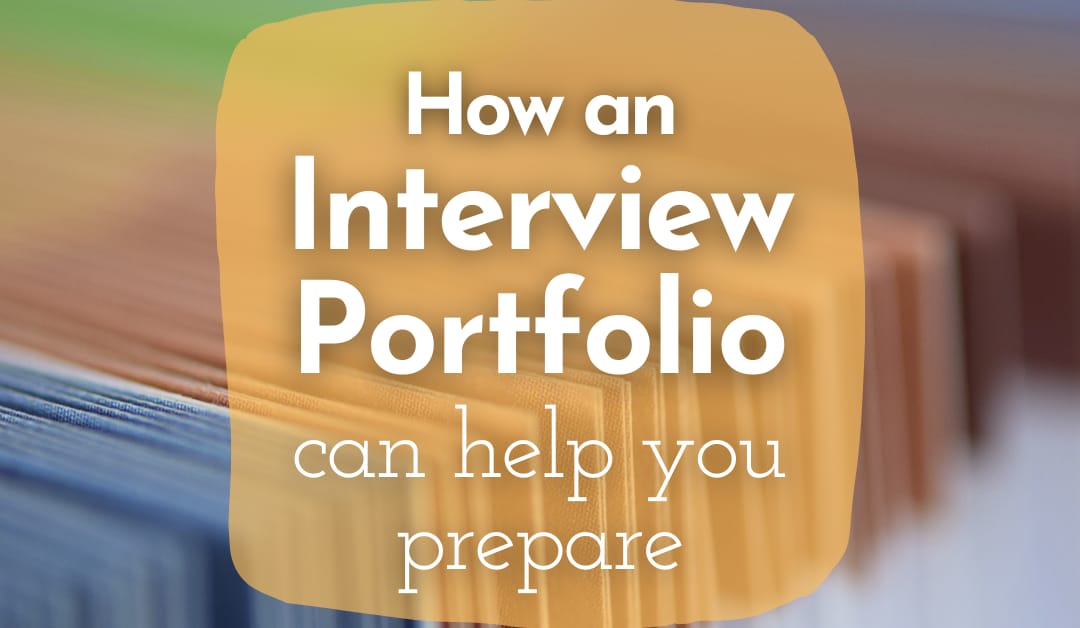What is an Interview Portfolio?
An Interview Portfolio is a way to start preparing before you’ve even applied for the job or been invited to an interview.
If English isn’t your first language, it might take you more time to get ready for an interview and practice your answers. You may always feel like you’re rushing to get ready at the last minute.
Preparing a portfolio of stories in advance means that when a job is posted that you want to apply for or when you finally hear back that they want to interview you, you know you’ll be ready.
Portfolio (noun): a collection of samples that you use as an example of your work, especially when applying for a job
Oxford Learner’s Dictionary
What goes in my portfolio?
Think about your “greatest hits.” What are the work experience stories that best show what you can do?
If you know that you’re going to be applying for jobs with a strong customer service element, focus on times you helped customers, communicated with them, or helped solve their problems.
You probably have a few key past projects that you already know you want to highlight. Prepare these in advance so that you know these stories by heart.
STAR+S
Because many interview questions these days ask you to “Tell us about a time when you…,” the STAR format is a great way to organize your answers.
STAR: Situation, Task, Action, Result
- Situation: Keep your background description to a minimum. What are the fewest details the listeners need to know to understand your situation?
- Task: What were you trying to accomplish? What was your goal? Why was it important? Again, keep it as short and direct as possible.
- Action: Focus on what you did, not what happened to you.
- Result: Use numbers or clear outcomes. Focus less on the benefit for the company and more on what the result shows about you and your abilities.
BUT, be careful. The result isn’t the end.
A big mistake that many people make is stopping before the final -S. Don’t forget to explain what this story Shows about you and what you can do. You might explain what you learned from the experience or even quickly summarize the story in order to tie it back to the question.
So what?
The final -S in STARS — which I call the So what? or the Show or the Summary — is the most important part of your answer. It’s your opportunity to make it crystal clear to the interviewers how the story you just told connects to the question they asked.
This summary is also what you can “pivot” or change depending on the question. After you’ve prepared the STAR of a story, you can simply change the Summary depending on what you need to Show in order to answer a variety of questions. Let’s look at an example.
Pivot the Spotlight
You may have a work experience story in your portfolio that shows how you’ve dealt with an angry customer in the past. However, that same story may also show what a good listener you are, OR how you deal with high-pressure situations, OR how well you communicate.
The good news is that once you’ve got the first part of your story prepared (the situation, task, action, result), all you need to do is pivot the last part to focus the spotlight on a different aspect of the story in order to answer a different question.
After all, you never know what questions might be asked. But, if you know your own stories well enough, you can quickly pivot your Summary or So what? to show different skills and abilities depending on what’s asked.
Get started on your own Greatest Hits portfolio
Get your top stories ready in advance, then practice pivoting the endings. By the time you get called in for an interview, you’ll already feel confident that you can describe your best work experience stories clearly and concisely.
Preparing in advance means you won’t feel panicked and rushed at the last minute. A quick practice, and you’ll be ready to go!
Learn more about my Interview Prep Package or contact Stephanie.

